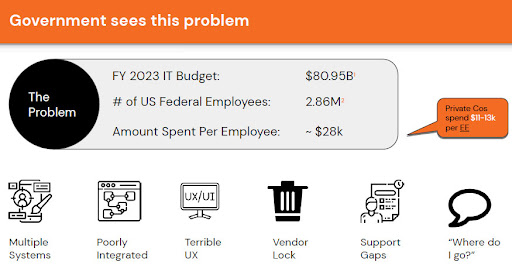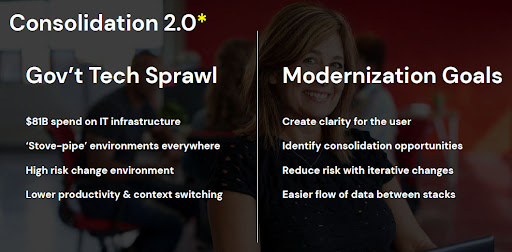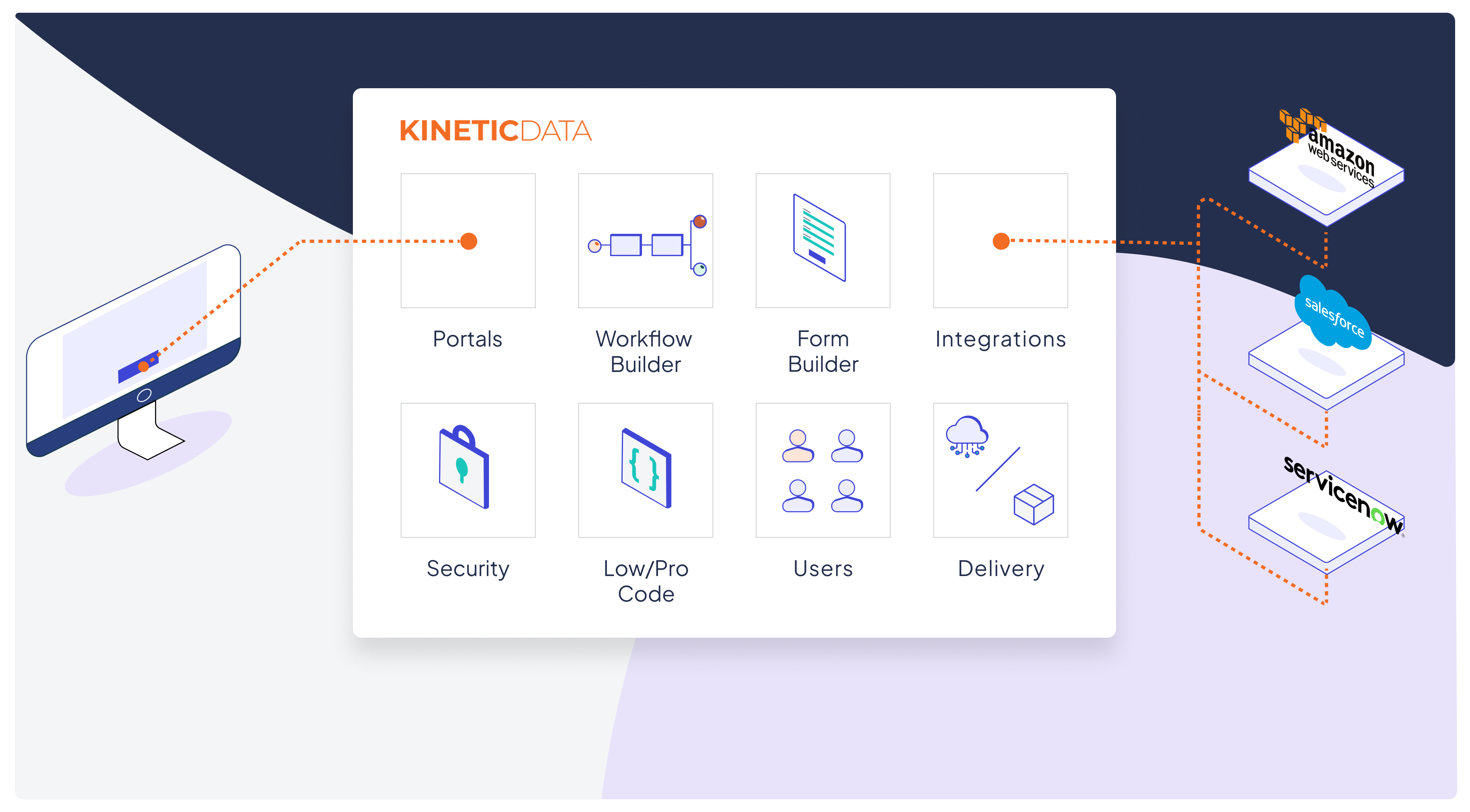The Value of Consolidation 2.0 for Federal IT
The Value of Consolidation 2.0 for Federal IT
The web of software applications used to manage operations across federal civilian agencies and the military is vast, complex, and in many cases archaic. The result is unnecessary risk, user frustration, and inefficiencies. There is a way to resolve these issues at modest cost and with minimal disruption. But it will require nimbleness and new thinking in place of traditional, massive, “big bang” technology platform implementations.
Before delving into potential solutions, here’s a quick look at the three primary factors driving the need for change.
Complexity
Precisely how many different applications does the federal government use? No one seems to know. In a matter of seconds, Google can show you the distance to the moon (238,900 miles), the deepest point in the ocean (36,161 feet), or the population of New Zealand (5,124,100). But the number of software applications used by the U.S. government? Even Google has no answer.
Obsolescence
On average, the 10 oldest legacy systems still relied upon to manage significant government functions (such the application the IRS uses to receive taxpayer data and issue refunds) are older than disco or catalytic converters. They not only predate the Internet by many years, but when some of these systems were first installed, Vint Cerf was still in college, Tim Berners-Lee was a schoolboy, Linus Torvalds was in diapers, and Larry Page hadn’t yet been born.
The U.S. Government Accountability Office (GAO) recently analyzed 65 federal legacy systems and identified the 10 most critical platforms for modernization. Per the GAO, these systems are “vital to providing essential services like emergency management, healthcare, and defense” but several use outdated code, rely on “hardware and software that is no longer supported by the manufacturers, or (have) major security risks.”
Inefficiency
The federal government’s IT spending amounts to more than twice as much per employee as in private enterprises. There are a number of reasons for this discrepancy, including the cost in resources and expertise to maintain legacy systems installed during the era of bell-bottoms, Viet Nam, and The Beatles, as well as poor integration between systems which forces users to constantly switch their focus among applications.
Here’s an illustration of the problem:

There has to be a better way. And there is. But it’s not the approach the government has taken in the past and, too often, still takes today. Reducing the cost and complexity of the federal IT infrastructure will require consolidation—the right kind of consolidation.
Consolidation 1.0: Behemoth Software Suites
Consolidation is the answer, but not via the old approach. That was about installing massive new systems that could replace three, four, or more legacy applications. The problem is, these new platforms are incredibly complex, expensive, and inevitably take longer and cost more than expected to implement. They require lots of training and ongoing support, and in the end—even if the implementation is ultimately successful—they don’t always deliver what was promised.
According to research from McKinsey, “On average, large IT projects run 45 percent over budget and 7 percent over time, while delivering 56 percent less value than predicted.” Yet these large-scale, “rip and replace” implementations continue to be pushed by big enterprise software vendors and large systems integrators, because…they are good business for those firms. They are not, however, always the best choice for government IT systems consolidation, or the employees expected to learn and use those applications.
Consolidation 2.0: Single Pane of Glass
The newer, better approach to consolidation is a single pane of glass, a modern system of engagement to front-end legacy systems of record. It’s embrace-and-extend rather than rip-and-replace. Compared to a big bang implementation, this approach is far less costly, less disruptive to current operations, and delivers results much more quickly.
Consolidation 2.0 combines a customizable front-end portal interface with a workflow orchestration engine that adds, deletes, and updates data across backend systems through integrations.
Users spend less time switching between applications and more time working in an intuitive, consistent front-end interface. They are more productive and need less training.
On the back end, when those aging legacy systems do get replaced, the change is virtually invisible to the user. The orchestration engine simply hooks into the new application, performing the same tasks now in newer software applications with no change to front-end workflow. There’s no disruption of operations or need for users to learn new software.

The diagram below illustrates some of the key elements of an orchestration engine, such as the Kinetic Platform. The low code / pro code capabilities enable non-technical users to build, test, and deploy forms and workflow automations in a safe manner. Sophisticated user management features enable granular rights and permissions. And of course, everything is secure (addressing one of the key risks of current legacy systems).

This approach also enables creation of purpose-built applications to manage any type of functional process (such as new employee onboarding or Form 2875 automation), which are future proof. Those applications can interoperate with in-place legacy systems today and with newer applications tomorrow—without disruption or retraining for users.
Benefits of (the Right Approach to) Consolidation
For government agencies and the military, the Consolidation 2.0 approach:
- Provides cost avoidance by reducing unnecessary spending on additional seat licenses for multiple applications.
- Uses an iterative approach that delivers quick, small wins to build momentum for change.
- Delivers greater visibility into workflow processes and status, to identify bottlenecks and support continuous improvement.
- Accelerates workflow through back-end systems integration.
- Creates flexibility via the ability to change out back end systems without any change on front end, making system replacement transparent to users.
- Increases efficiency and productivity, reducing the need to hire new staff.
For users, this approach:
- Provides a simpler, consumer-grade experience.
- Reduces or eliminates disruption when back-end systems are replaced.
- Simplifies training by delivering capabilities through a single, intuitive interface.
- Eliminates the swivel chair, the constant workflow interruption of switching between different systems to accomplish tasks.
Conclusion
Today’s federal IT is overly complex and costly, causing frustration for users and missed opportunities for fulfilling the mission. Consolidation, done with an embrace-and-extend, single pane of glass approach, simplifies the environment for users and provides multiple benefits.
It enables cost avoidance by reducing or eliminating unnecessary software license fees and enabling agencies to embrace and extend current in-place systems. Rip-and-replace projects for older legacy systems become one option, rather than the only option.
The Consolidation 2.0 approach empowers developers and non-technical users alike to create intuitive, purpose-built applications using secure forms and workflows. COTS applications are often bloated with extraneous, unnecessary features while failing to meet core requirements. Creating tailored applications specific to your needs delivers value quickly while enabling ongoing, iterative enhancements.
Finally, the ability to integrate data from virtually any source eliminates data silos and accelerates process completion.
Kinetic Data has extensive experience with Consolidation 2.0, and creating one experience to manage them all. Our Kinetic Platform provides the framework for creating purpose-built applications that are focused on human-centric workflows. See this Workflow for Agencies document to learn more.



